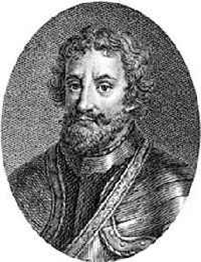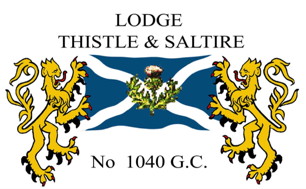Banners have been associated with acts, methods and means of attracting attention. In pre-historic times they notified the tribe of returning warriors. Different shapes or even colours helped to distinguish one tribe from another and in times of conflict serves as a rallying point.
Nothing changes, the Banner today is still a source of identity and can serve as a powerful rallying point for any Masonic Order. Therefore every Scottish Lodge has a Banner to represent thier unique identification.
Like in pre-historic times, but on this occassion this Banner identifies the Masonic Lodge of Thistle & Saltire. The Banner is carried and escorted into the Lodge by the Banner Bearer at the start of each meeting and put to rest at the end. A symbol of the Identification of this Lodge to all those Visiting Brethren.
About us
Unlike other Grand Lodges where usually the same design of apron is worn in all daughter Lodges the Grand Lodge of Scotland does not superimpose such a regulation. It is a good old tradition that every private Lodge chooses their own colours. This leads to a great variety of designs. From the classic light blue and white - colours which are usually connected with St. John’s Masonry - to almost every combination of any colour and tartan: a big Masonic meeting in Scotland often makes a very chequered picture.
Lodge Thistle & Saltire was founded by a group of dedicated Freemasons who felt that there was a need for a Lodge in Germany practising a Scottish Ritual. Although the situation in Germany is very special in that there is a large variety of Rituals - including English and American ones - the specific Scottish way of doing it could not be experienced.
The Thistle as Scotland’s national flower is usually associated with  the country and many issues of Scottish origin or relationship. It is little wonder, therefore, that it was adopted as one of the Lodge symboly and part of the name. The Thistle resembles very much a bud, even when it’s in full bloom. Below the obvious meaning as a national symbol it therefore is a picture of the hope of the Founder Members that the Lodge would flourish and develop into a strong community.
the country and many issues of Scottish origin or relationship. It is little wonder, therefore, that it was adopted as one of the Lodge symboly and part of the name. The Thistle resembles very much a bud, even when it’s in full bloom. Below the obvious meaning as a national symbol it therefore is a picture of the hope of the Founder Members that the Lodge would flourish and develop into a strong community.
Not everybody knows that “Saltire” means the diagonal cross of St. Andrew, Scotland’s sacred Patron. Especially foreigners are often puzzled although almost everybody recognizes the Scottish national flag which shows a white cross of St. Andrew - a Saltire - on blue ground. The flag was adopted as a national symbol approximately in  the 14th century. Those related to seafaring will know that the same flag is used as the naval sign for “help”. Not a bad connection for a society which is devoted to Charity.
the 14th century. Those related to seafaring will know that the same flag is used as the naval sign for “help”. Not a bad connection for a society which is devoted to Charity.
The number of a Lodge is the one under which it is listed on the “Roll” - the directory of Lodges kept by the Grand Lodge of which it is a daughter lodge. Usually these numbers are given away one by one but in our case the Grand Master of the United Grand Lodges of  Germany - which keeps the roll of all five partner Grand Lodges - on special request allowed us “1040” instead of a lower number. So the roll number of the Lodge resembles of an important date of Scottish history. On August 14th, 1040 Macbeth killed Duncan I., King of Alba, in the battle of Elgin and crowned himself King. Very different from the dark picture William Shakespeare created in his famous drama, history knows that Macbeth (Gaelic: Mac Bethad mac Findlaích) was in no way a tyrannical, mentally insane dictator. On the contrary he united Scotland under his government and gave the country a peaceful and prosperous period until he died in a battle in 1057, killed by Duncan (III.) who became King after him.
Germany - which keeps the roll of all five partner Grand Lodges - on special request allowed us “1040” instead of a lower number. So the roll number of the Lodge resembles of an important date of Scottish history. On August 14th, 1040 Macbeth killed Duncan I., King of Alba, in the battle of Elgin and crowned himself King. Very different from the dark picture William Shakespeare created in his famous drama, history knows that Macbeth (Gaelic: Mac Bethad mac Findlaích) was in no way a tyrannical, mentally insane dictator. On the contrary he united Scotland under his government and gave the country a peaceful and prosperous period until he died in a battle in 1057, killed by Duncan (III.) who became King after him.
